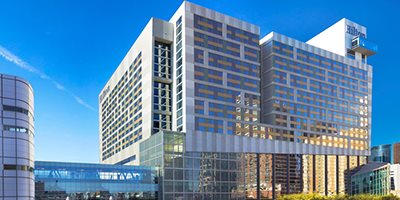Colleagues from our Houston office will be chairing and co-chairing a number of sessions at the 2016 Spring Meeting and 12th Global Congress on Process Safety, which is taking place between the 11th and 14th of April in Houston. Eric Peterson will be chairing all of the Process Safety Spotlights (17 sessions in total, taking place between the 11th and 13th) with Sanjeev Saraf (BP) as co-chair. You can find out more about these sessions by clicking here.
MMI will also present a paper during the ‘LNG, LPG, and NGL Safety’ session.
Monday 11th April
David Weimer will chair ‘Human Factors in Chemical Process Safety I’ between 10:30am and 12:00pm. This session will address the influence of human factors associated with chemical process safety. Topics will span the human influence gamut from facility conception through decommissioning, with an expectation that most center on operation.
Later in the day, Tony Liu will co-chair ‘Process Simulation, Optimization and Control in Gas Applications II’, which takes place between 3:30pm and 5:00pm. This session will discuss process simulation, optimization and control in gas processing applications.
At 3:30pm, during the ‘LNG, LPG, and NGL Safety’ session, MMI’s paper entitled ‘Multiphase Flow Modeling of LNG Using Smoothed Particle Hydrodynamic (SPH) Techniques’ will be presented (authored by Anh Bui, Morgan Reed, Eric Peterson and Tony Liu). The aim of this session is for presenters to describe the application of process safety in gas utilization, as well as ways in which plants are addressing compliance with current US codes and standards. The aim is for discussions to center around recent incidents, as well as ways of managing aging facilities. MMI’s abstract is as follows:
Smoothed Particle Hydrodynamics (SPH) has shown promise when used for numerical simulation of the release of LNG and the subsequent spreading of the liquid. Although the SPH method has been used for years in the astrophysics industry, its application to the LNG industry is quite novel. The spreading and vaporization of LNG creates the potential for a large vapor cloud with the risk of an explosion or flash fire. Vaporization of LNG during its spreading over water or solid substrate involves either evaporation at the air – LNG interface or nucleate/film boiling upon contact of cold LNG with relatively high-temperature substrate surface. For the later vaporization mechanism to be correctly modeled, surface temperature and its subsequent change due to contact with LNG needs to be described. Consequently, a conjugate heat transfer model which includes wall heat conduction would be necessary. The SPH method offers excellent mass conservation, especially when modeling small scale changing fluid interfaces (i.e. thin film or small vapor bubbles). This paper discusses the continued development of a multiphase flow model with heat transfer and phase change based on the SPH model available in the LAMMPS Molecular Dynamics Simulator software. A mechanistic film boiling model is implemented and incorporated into our SPH flow model. The conjugate heat transfer between the moving LNG layer and surrounding environment (substrate) is also modeled to account for the cooling of the substrate over time. Limited validation of the SPH prediction of the LNG spreading will be conducted and examples showing the enhanced boiling and heat transfer capabilities of the proposed LNG spreading model will be outlined and discussed.
Tuesday 12th April
Morgan Reed will co-chair three sessions: ‘Facility Siting, Consequence Analysis, and Risk Assessment I’ (8:00am – 9:30am); ‘Facility Siting, Consequence Analysis, and Risk Assessment II’ (10:15am – 11:45am); and ‘Facility Siting, Consequence Analysis, and Risk Assessment III’ (1:30pm – 3:00pm). These sessions will focus on applications and recent advancements in consequence analysis, facility siting technology, and quantitative risk analysis, as well as integration and application of such tools and techniques into corporate risk assessment.
To see the full programme for the 2016 Spring Meeting and 12th Global Congress on Process Safety, please click here.
